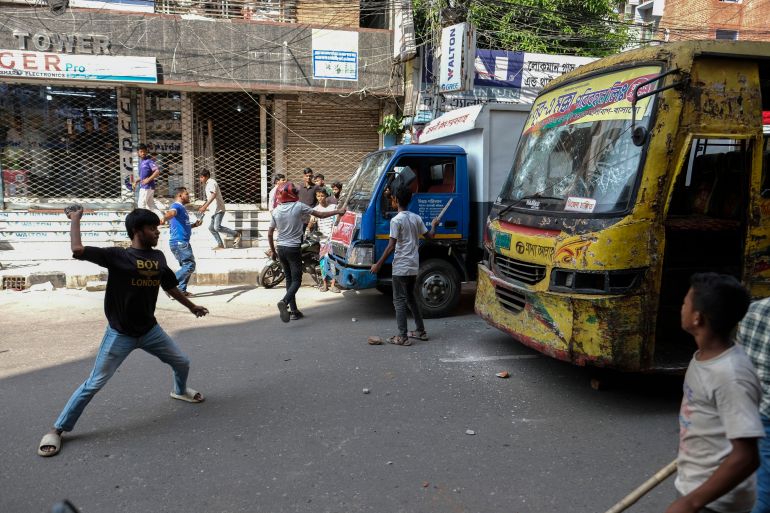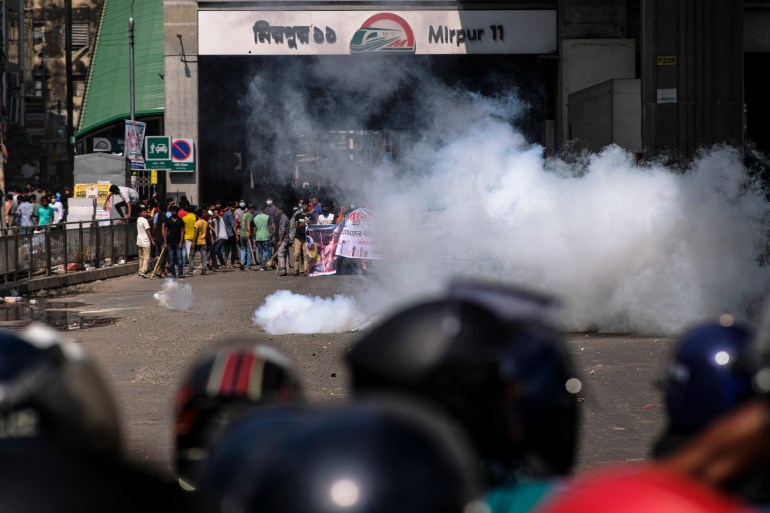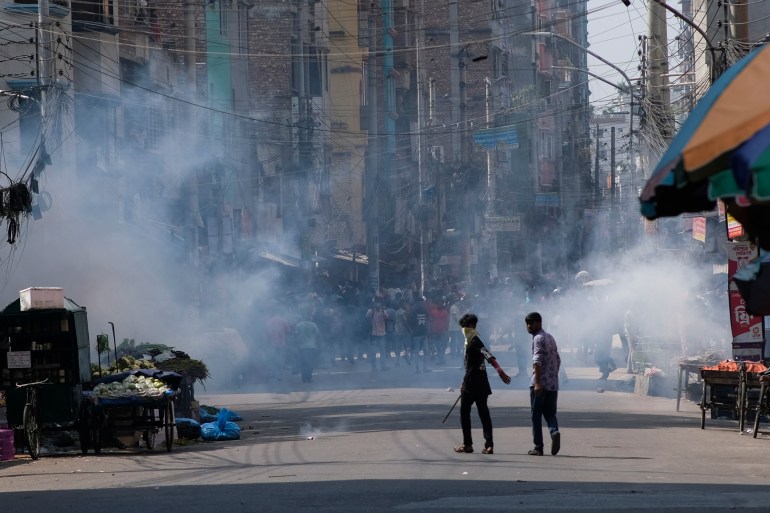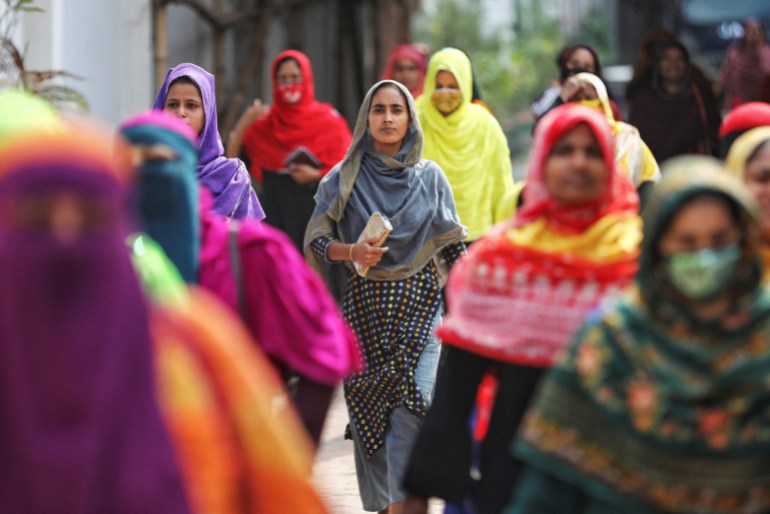Bangladesh garment workers ‘frustrated’ by gov’t wage hike after protests
The minimum wage increase comes after weeks of the worst protests in a decade hit Bangladesh’s major industrial areas.

Authorities in Bangladesh have announced a new salary structure for protesting garment factory workers with a 56 percent increase in the monthly minimum wage to $113 from the previous $75, a decision rejected by some workers’ groups as too small and “extremely frustrating”.
State Minister for Labour and Employment Monnujan Sufian announced the decision on Tuesday after a meeting of a government-formed wage board made up of representatives of factory owners and workers.
Keep reading
list of 4 itemsMassive fire guts popular clothing market in Bangladesh capital
Bangladesh’s garment sector faces energy, demand crises
Photos: Bangladesh’s garment-driven economic boom killing rivers
She said the new pay structure will take effect from December 1.
The decision came after weeks of the worst wage-related protests in a decade hit Bangladesh’s major industrial areas and a suburb of the capital, Dhaka.

The protests began after the Bangladesh Garment Manufacturers and Exporters Association offered to increase the monthly minimum wage by 25 percent to $90. The last increase in the minimum wage was announced in 2018.
Tens of thousands of workers, demanding a $208 monthly minimum wage, demonstrated in the streets. Four factories were torched and at least two workers were killed in the violence, as the workers blocked highways and fought with police.
Earlier on Tuesday, police fired tear gas at thousands of workers who set a bus on fire outside Dhaka, as tensions rose ahead of the wage raise announcement.
Police said violence broke out in the industrial city of Gazipur as about 6,000 workers walked out of their plants and staged protests.
“They torched a bus. We fired tear gas to disperse them,” Gazipur industrial police unit chief Sarwar Alam told the AFP news agency.

Police said about 600 garment factories that make clothing for many major Western brands were shuttered last week.
The protests pushed the government to form a panel of factory owners, union leaders and officials to consider the demand for higher pay.
‘We can’t accept this’
Workers say they currently need to work overtime to make ends meet at a time when inflation is running at 9.5 percent.
“The increase is not enough when prices of all items and rent have gone up sharply. We work to survive but we can’t even cover our basic needs,” Munna Khan, a garment worker, said.
Kalpona Akter, president of the Bangladesh Garment and Industrial Workers Federation, said they were “extremely frustrated” over what she described as a paltry increase.
Akter said workers are struggling because prices of daily commodities are rising. “This is very frustrating. We can’t accept this,” she said.

But Siddiqur Rahman, the owners’ representative on the wage board, accepted the hike.
“[Government welfare] cards will be provided to the workers, later the ration cards will be given to them so they can buy essential commodities at cheaper rates,” Rahman, also a former president of the Bangladesh Garment Manufacturers and Exporters Association, told the Reuters news agency.
Bangladesh is the second largest garment-producing country in the world after China with nearly 3,500 factories employing about four million workers, most of them women, according to the manufacturers’ association.
It says factory owners are under pressure because global brands in Western countries are offering less than before.
Critics say the influential factory owners should do more for the workers. The owners argue that production costs have also increased because of higher energy prices and transportation costs.
Bangladesh annually earns about $55bn – almost 16 percent of its gross domestic product – from exports of garment products, supplying many of the world’s top fashion names including Levi’s, Zara and H&M, mainly in the United States and Europe.
The country is also exploring new markets such as Japan, China and India.